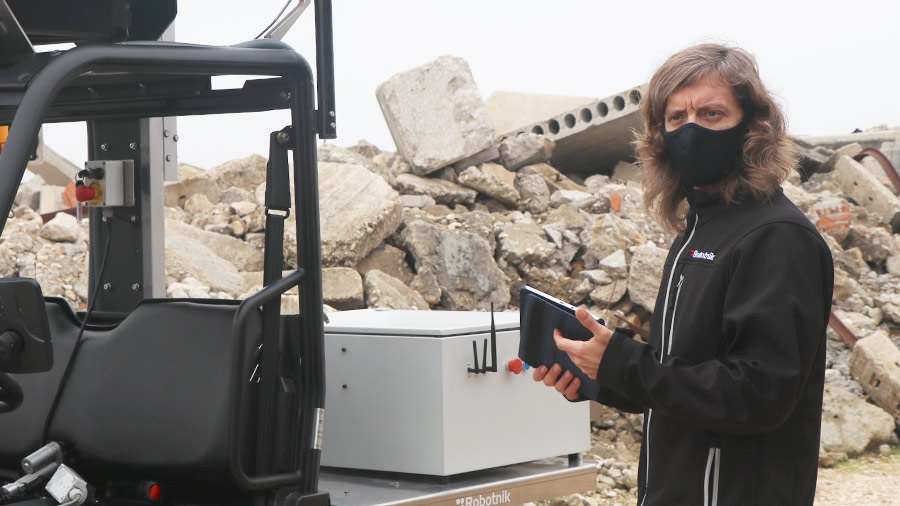Ángel Soriano is the manager of several R&D projects at Robotnik Automation, the leading Spanish company in collaborative mobile robotics.
For more than 5 years, Ángel, who holds a PhD in Automation, Robotics and Industrial Informatics, has been in charge of proposal writing, development and management of several European H2020 projects.
In this talk he tells us about some of the new developments in research in the field of mobile robotics or the close relationship between the work in R&D and the manufacture of robots and mobile manipulators in Robotnik. This is how collaborative mobile robotics is providing solutions today.
R&D Projects
Q. At Robotnik you dedicate a large part of your efforts to R&D work through projects that require mobile robotics solutions.
What value do you consider that R&D projects bring to the robotics sector?
A. These projects play a decisive role for the sector and drive research from the two most important points of view: on the one hand, the researcher who develops the technology beyond the current state of the art and, on the other hand, the industry or party interested in applying this technology in each specific use case is directly involved.
This synergy, created from the beginning of the project, directs and orients the research towards results that are tangible, demonstrable and applicable for the industry and interesting for the further evolution of the autonomous mobile robotics sector.
Q. At the moment, what are the European R&D projects that you coordinate within Robotnik?
A. At Robotnik we are involved in about 30 R&D projects of different nature where we are mainly in charge of the development of robotic platforms and related technology. I personally, participate in the development of several of the projects that Robotnik has open, most of them are European projects within the H2020 framework, but I am in charge of coordinating 4 of them:
FASTER: the objective is to address a series of challenges that arise in dangerous situations for human teams working in emergencies. It is a project oriented to offer and apply new technologies such as aerial and ground robots for rescue operations carried out by emergency teams in cases such as earthquakes, floods or closed buildings.
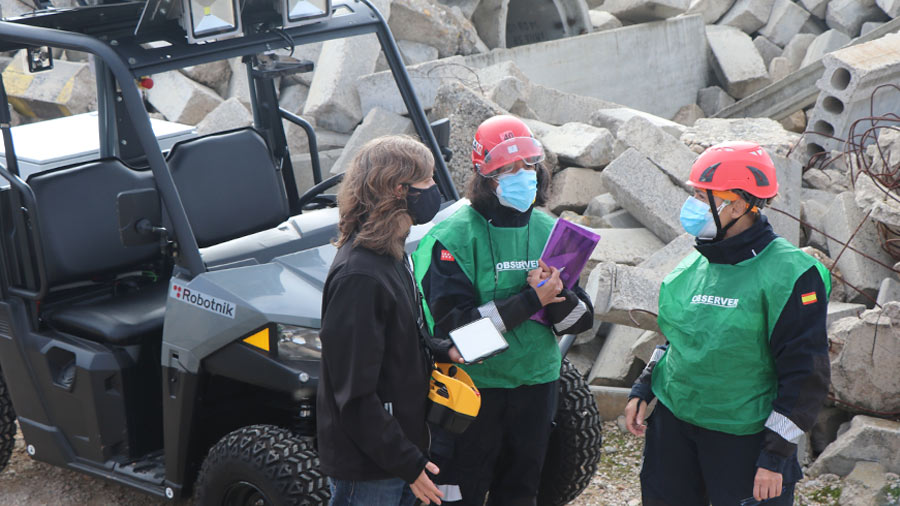
ODIN: this project is oriented to the integration of technologies for hospital services, mainly through Artificial Intelligence. Here, autonomous mobile robots will provide services ranging from logistics support to interaction with patients and staff.
BACCHUS: we have seen how the incorporation of mobile robotics in agriculture has made significant progress in recent years. BACCHUS seeks to automate high-precision selective harvesting by means of mobile manipulation robotics, trying to imitate the same mechanics performed by an operator, i.e., using two coordinated arms for harvesting.
ODYSSEUS: this is one of the most recent projects we have entered into and is still at a very early stage. It is a safety project aimed at detecting gases or highly explosive elements through the use of sensorized UGVs specifically for this purpose.
Q. Autonomous mobile robots play a key role in all these projects. Tell us about some of the Robotnik robots involved and what exactly they contribute.
A. The RB-CAR in FASTER is a vehicle oriented for outdoor rescue operations that can navigate autonomously by GPS to explore unknown areas, create in real time a 3D map of the environment and stream the different sensors it incorporates -thermal camera, stereo camera or 3D Lidar- to the control station where the vehicle operator would be located. In addition, it can accommodate two crew members and can be driven manually.
One of the features is that the vehicle initially stores a secure GPS position, where the control station would be installed, and can be driven while testing the environment. Once something of interest is found, the driver gets out of the vehicle to attend to the situation in question and can send the autonomous robot back to the safe position where it started, i.e. acting as a mule vehicle transporting materials from one point to another.
SUMMIT-XL is another of the autonomous robots participating in FASTER. Being a smaller vehicle than the RB-CAR, it is oriented towards indoor exploration, although it has also been used in outdoor scenarios. The SUMMIT-XL also offers autonomous GPS navigation and 3D mapping while streaming video from the built-in thermal and steerable RGB cameras.
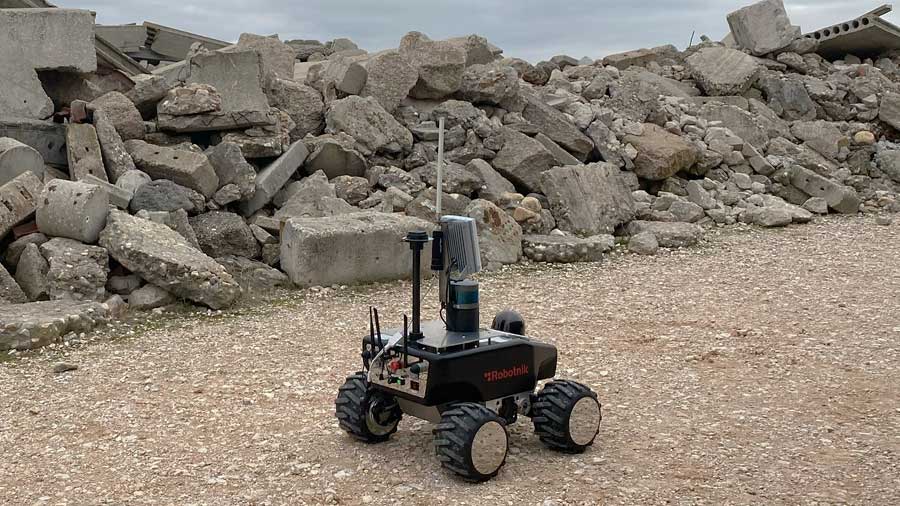
At ODIN we use the RB-1 BASE platform. It is one of the indoor mobile robots in charge of moving autonomously around the hospital for transporting goods, monitoring instruments or interacting with staff.
We also have the RB-VOGUI XL robot at BACCHUS which is a bi-arm robot, the RISING at ODYSSEUS….
Q. You mentioned that since 2002 Robotnik has been part of more than 60 research projects at the European level. What are the main challenges facing mobile robotics/manipulation in these R&D projects?
A. Autonomous robotics advances as its technological context does. Right now we are in a super interesting moment where 5G, Artificial Intelligence, augmented reality or 3D navigation, for example, allow important progress for robotics.
In my opinion, these are the 3 main challenges we are facing in project development:
- Dynamic and unpredictable environments. This is one of the most critical factors when offering a solution applicable to different scenarios or use cases. Here, mobile robotics goes hand in hand with AI.
- Sensing technology is advancing rapidly but does not yet offer solutions with the precision required for some applications.
- The technology transition gap between the research community and end users. It is complicated today to offer products or results of these projects that are within the reach of the knowledge and usability of a non-expert user in the field. There is still a long way to go to relax the usability gap between the technology provider and the end user.
By sectors
Q. Collaborative robotics applications have become a determining factor for the growth of companies in different sectors. For example, what is the contribution of robotics in the logistics sector?
A. In indoor logistics, the autonomous organization of warehouses and the internal transport of goods is the order of the day. In addition, the innovation lies in the fact that mobile vehicles that used to move along a fixed track within an assembly line, e.g. Autonomous Guided Vehicles (AGVs), are now Autonomous Mobile Vehicles as developed and manufactured by Robotnik, so they can move freely on the ground, can modify their trajectory and offer greater flexibility. This means that the customer does not need to modify the environment or install anything in particular to do so.
In this field, the fleet of heterogeneous robots that can autonomously coordinate with each other to perform tasks optimally is one of the most in-vogue research at the moment.
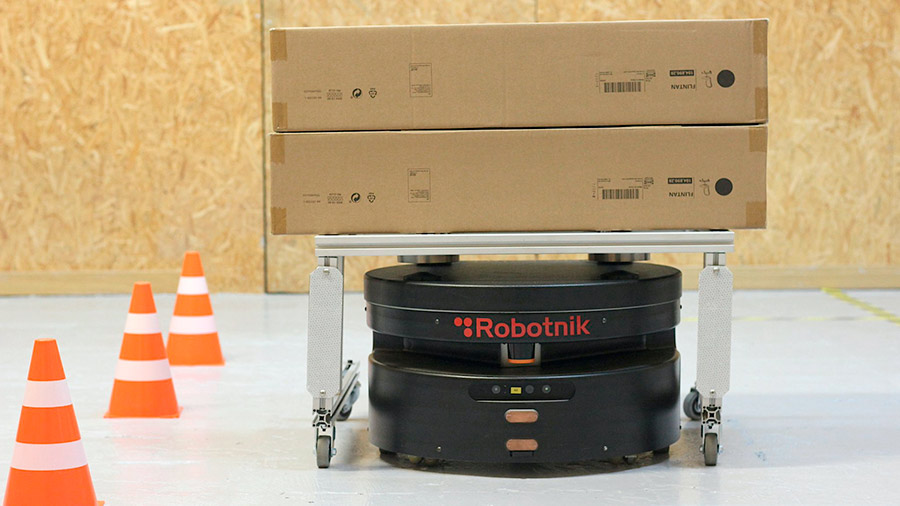
One of the most popular robots aimed at indoor environments is the RB-1 BASE. A differential robot that can navigate autonomously moving shelves or goods with a payload of up to 50 kg.
Outdoor logistics is where we find the greatest advances in recent years in terms of the application of mobile robotics. We can already see in operation applications oriented to the last mile -such as AUDERE– with autonomous robots transporting goods or packages during the last part of the route or short journeys for tasks such as picking up garbage, delivering packages, picking up fruits…
The RB-VOGUI platform is one of the most widely used mobile robots in outdoor logistics. It can navigate autonomously and, with a manipulator arm mounted on top of the base, it is able to interact with objects in the environment, picking up garbage from the ground or samples of interest.
There are other topics, such as road freight transport, where there is still some way to go, although it is true that research is working on it, so results will certainly be obtained in the near future.
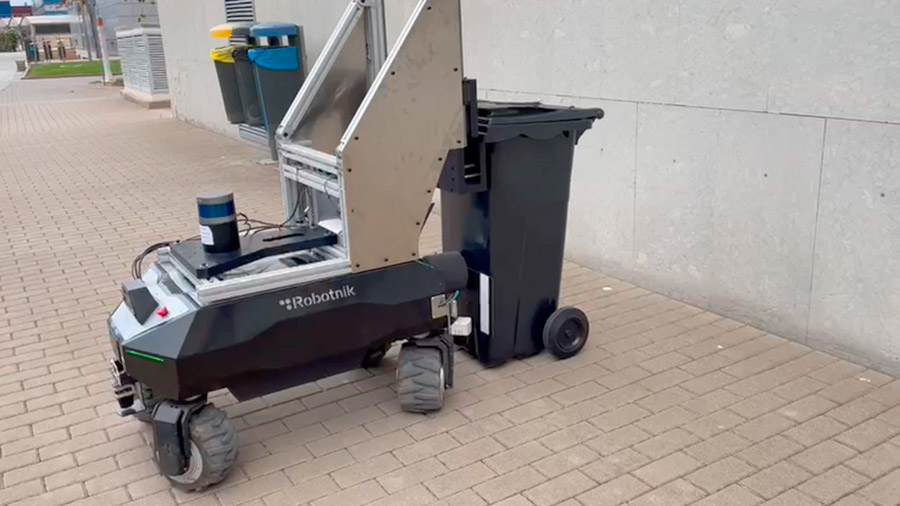
Q. And what about the security and defense sector?
A. In this case, robotics tries to offer tools that mitigate the dangers faced by people working in these sectors with two main ideas. On the one hand, sending the robot to the critical scenario first rather than the human, basically because if something goes wrong, it affects the robot and not the human. And on the other hand, to work in the affected area trying not to contaminate it.
Q. You also mentioned earlier the great advances that have been made in the agricultural sector.
A. Automation in the agricultural sector is not really new, there are many large machines, trucks, tractors with specialized machinery for harvesting fruits and vegetables.
But the results of these machines cannot be compared with the work done by the operators who are specialized in the field. The operator knows just by looking at the fruit if it is ready to be picked or if it needs more time to be riper. Or which grape is the best for wine production.
This is the birth of precision agriculture in which robotics offers many advantages.
Apart from the obvious advantages such as working without human supervision or working at night, the main idea is to provide autonomous robots with the ability to identify, as humans do, the best option to act with the environment.
As I said before, within the BACCHUS project, the RB-VOGUI XL mounts two manipulator arms to harvest autonomously as a human would. Using one arm as the hand that holds the scissors and cuts the bunch and in the other the final effect that has to act as a hand, picking up the whole bunch.
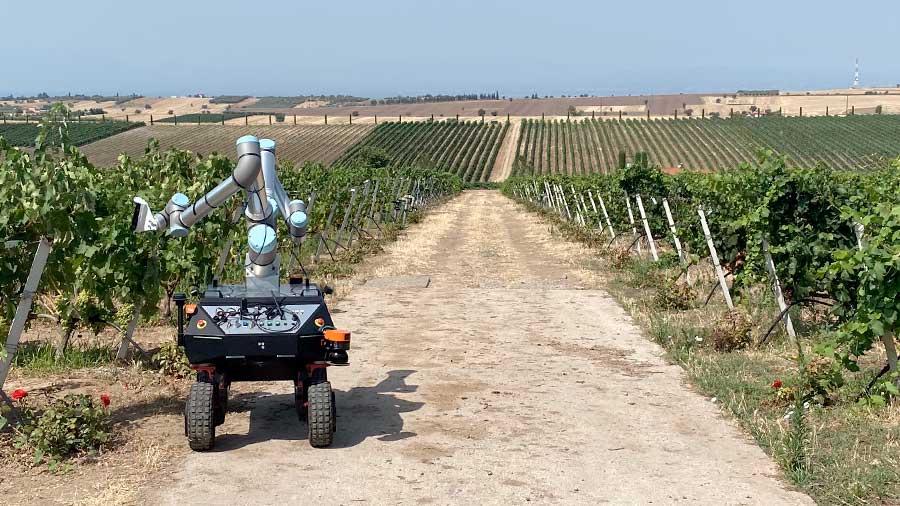
Ángel Soriano has participated, presented and defended papers in several national robotics conferences such as the annual Jornadas de Automática organized by the Comisión Española de Automática (CEA), and international conferences such as the IEEE International Conference on Robotics and Automation (ICRA) or The World Congress of the International Federation of Automatic Control (IFAC), among others. Author of book chapters in Advances on Practical Applications of Agents and Multi-Agent Systems and Distributed Computing and Artificial Intelligence. Author and co-author of several articles published in high impact international journals such as Robotics and Autonomous Systems, IEEE/ASME Transactions on Mechatronics or Sensors. He has been a researcher at the Polytechnic University of Valencia for more than 5 years, associated with several research projects of the national plan of the Ministry of Economy and Competitiveness. He has been a senior technician in the Robotics Laboratory of the Institute of Automation and Industrial Informatics of the Polytechnic City of Innovation and has been an associate professor at the Department of Systems Engineering and Automation of the Polytechnic University of Valencia for more than 2 years.


